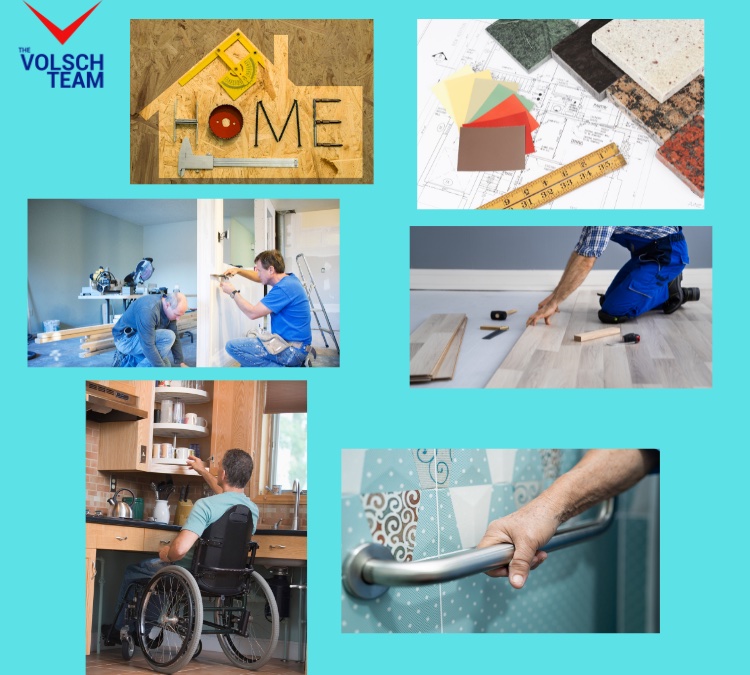We all have our own vision of how we’ll one day retire, from whiling away our days with our grandkids to hitting the pickleball courts every morning, to joining the Rolling Stones on tour (because they will never, ever go away). One dream, however, is common to three quarters of older adults: They want to stay in their current home. For the rest of their lives.
The problem with that idea is that many of today’s homes aren’t equipped to handle the needs of aging Americans.
However, a movement is growing to make homes livable for people of all ages, and age-related different abilities. The idea is to make the homes more accessible and inhabitable as the years turn into decades—but to do so early on and relatively unobtrusively. Newer homes are likely to have such features already, and contractors are increasingly helping retrofit older homes with them, too.
While it’s easy to put off thinking about aging in place, it’s better to start considering this possibility as early as possible.
“What you don’t want to do is have to start remodeling while you’re trying to figure out how to recover after a health incident,” says Aging in Place Institute founder Louis Tenenbaum.
Whether you’re shopping for your “forever home” or thinking about how to renovate your current property into one, you’ll probably need a home with these features in order to successfully stay put.
1. A no-step entry
Harsh reality intrusion No. 1: At some point before the end of your days—perhaps long before—a wheelchair may become a necessity to get around. So, you’ll want at least one entrance into your home that doesn’t require going up steps. If the door has just a few steps and there’s enough lawn space, contractors can work with the slope of the yard to install a ramp to the entryway. And they can be designed in ways that don’t scream “geriatric” to everyone who sets foot in your place.
2. A slip-proof bath and shower
Harsh reality intrusion No. 2: Slips and falls in the bathroom are a major source of injury for the elderly. So you’ll want to outfit this place with grab bars to avoid accidents. If the prospect makes you feel like you’re already living in a nursing home, know that many of today’s grab bars could easily pass for ornamental pieces, or double as towel racks or toilet paper dispensers, as long as they’re properly anchored.
In fact, many universal design elements allow for functionality without sacrificing the look and feel of the space.
“It can be absolutely beautiful,” says Tammy Kaplan, an interior designer and certified aging-in-place specialist with AIP Designs in Scotch Plains, NJ. “The bathrooms that we do look like spas.”
3. An accessible bedroom and bathroom
Three-quarters of homes offer one-floor living. If your home doesn’t, it may be possible to convert an existing living or dining room downstairs into a bedroom, especially if there’s a full bath already on the first floor.
You can also make a first-floor addition, or continue using your second floor if you install an elevator or chairlift. Though pricey, such renovations could beat the cost of moving to a new house
4. A prep-friendly kitchen
If cooking for family members is your passion, you’ll want to make sure your kitchen still suits your golden years. What that looks like: multiple-height counters, reachable storage and a microwave, and drawer dishwashers that don’t require bending over. All of these things can make food prep as easy as ever as you age.
5. The latest tech
The internet of things and explosion of smart home gadgets are a boon to the elderly, because it means you can lock your doors, adjust the temperature, and turn off the lights from your phone or tablet without even having to stand up. Plus, the latest home security systems can offer added peace of mind, especially if you live alone.
“Technology is one of the great enablers that’s going to allow us to stay safe and connected to other people in our homes,” says Laurie Orlov, founder of Aging in Place Technology Watch.
6. Tiny tweaks
Once you’ve got the large, costly renovations covered, there are a number of smaller projects that can also make a big difference as you age. And many might be things you’d never thought of, like the following:
- Wider doorways for easier wheelchair access, ideally to 36 inches
- Replace regular doorknobs with lever handles, which are easier to open
- Key-less entries with a combination code so you don’t have to fumble for your keys
- “Comfort-height” toilets, which are 2 to 3 inches higher than usual, which entail less bending before you sit (Bonus: You can add a bidet.)
- Pull-out cabinets or drawers with pull-out shelves, which allow you to put objects within easier reach
- Hard-surface floors or low-pile carpet, which are ideal for wheelchairs
- More lighting, which means less squinting

